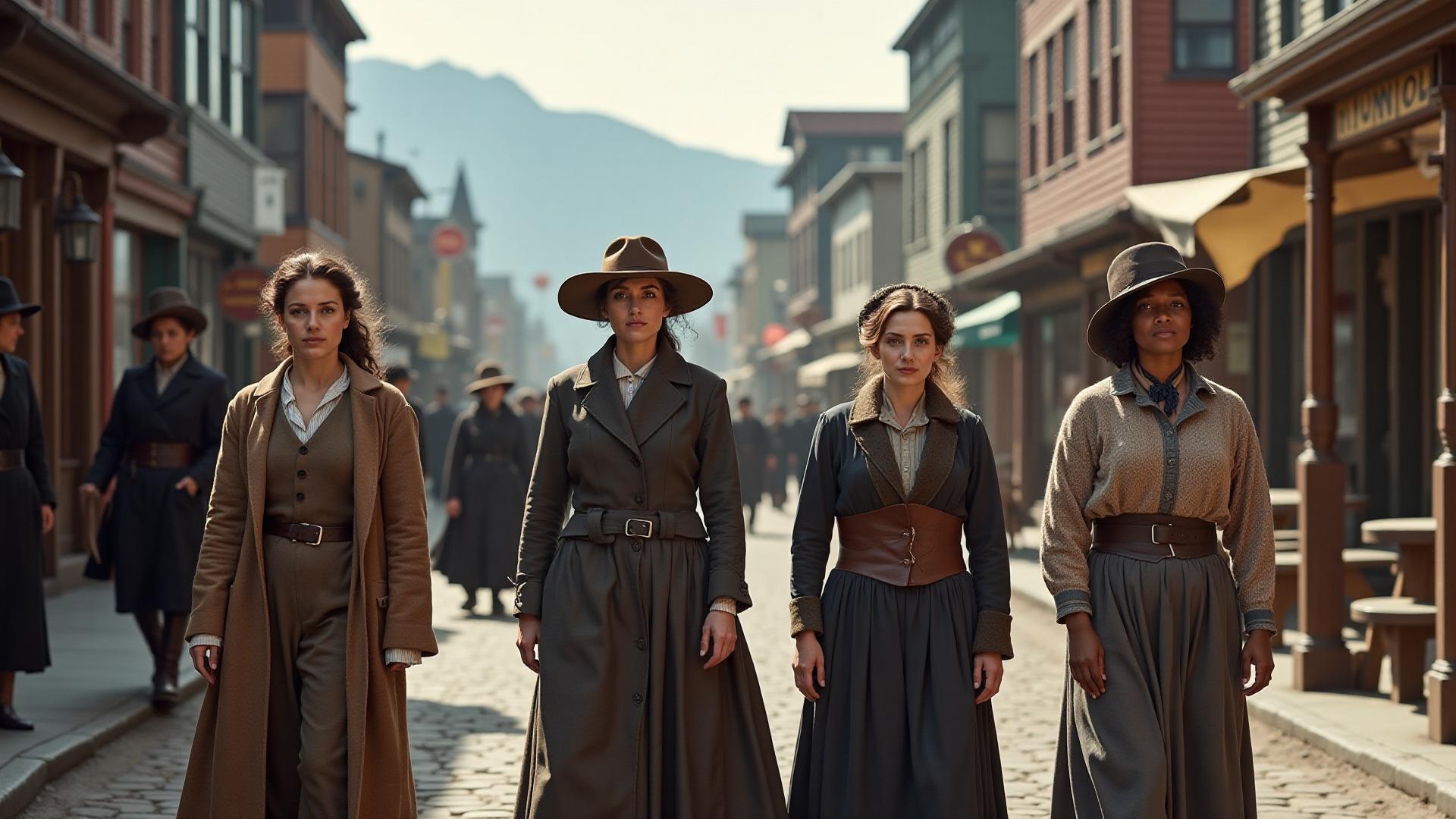Women were a small minority in the Klondike, but their presence and agency left an indelible mark on the social fabric of the gold rush. Far from being passive observers, they were entrepreneurs, laborers, prospectors, and community builders who challenged Victorian gender norms in one of the world's harshest frontiers.
Demographics & Travel
In 1898, women made up approximately 8% of the Klondike population overall and 12% within Dawson City proper. While these percentages seem small, they represented thousands of women—each with her own story, motivations, and struggles.
Some traveled with family or spouses, supporting mining operations or seeking new opportunities. Others traveled alone—a remarkable act of independence for the late Victorian era. Single women heading to the Klondike faced social censure, physical danger, and logistical challenges that would have deterred most.
The Journey North for Women
Women climbing the Chilkoot Pass faced unique challenges. Victorian dress was impractical for mountain climbing, yet abandoning it invited moral judgment. Many adapted by wearing "bloomers" (loose pants) under skirts, or adopting men's clothing entirely—scandalous for the era.
The physical demands were identical to men's: carrying heavy loads, enduring bitter cold, risking avalanches and exposure. But women also faced additional threats—sexual assault, exploitation, and the vulnerability of being female in male-dominated spaces.
Roles & Economic Participation
Contrary to popular myth, women in the Klondike weren't just "dance hall girls" (though many were). They participated in nearly every aspect of gold rush economy:
Service Industries
- Boarding house operators: Provided meals and lodging
- Laundresses: Charged premium prices for washing clothes
- Seamstresses: Repaired and made clothing
- Cooks: Fed mining crews
Business & Entertainment
- Restaurant owners: Ran successful eateries
- Shop keepers: Sold goods and supplies
- Theater performers: Entertained in venues
- Dance hall workers: Worked in entertainment
Some women adapted traditional dress to conditions—switching to more practical clothing for travel and labor. Others maintained Victorian respectability despite frontier conditions, seeing proper dress as essential to social standing.
Sex Work in Dawson City
The entertainment and sex industries became prominent in Dawson. Brothels, "cigar shops," and independent houses operated in hierarchies. This is a complex aspect of women's history that deserves honest examination.
Sex work operated on a racial and class hierarchy:
- Elite courtesans: White women who entertained wealthy men, maintained autonomy
- Dance hall girls: Worked in saloons, earned commission on drinks
- Brothel workers: Subject to exploitation, police harassment
- Indigenous women: Most marginalized, faced severest discrimination
Some women chose sex work as their most lucrative option; others were coerced or desperate. The Northwest Mounted Police regulated prostitution heavily, arresting workers while rarely prosecuting clients—reflecting gender double standards.
Notable Women
Kate Carmack (Shaaw Tláa)
The most iconic woman of the gold rush was present at the original discovery. She was Tagish, George Carmack's wife, and actively participated in prospecting. After George found wealth, he abandoned Kate—a sadly common pattern. She received little recognition and struggled after their separation. Her story embodies both women's contributions and their erasure from history.
Belinda Mulrooney
Perhaps the most successful female entrepreneur, Mulrooney arrived with $5,000 and parlayed it into a fortune through hotels, trading posts, and mining investments. She built the luxurious Fairview Hotel and proved women could succeed as business magnates on the frontier. Her success challenged assumptions about women's business capabilities.
Martha Black
Martha Louise Munger Black arrived in Dawson in 1898, became a successful entrepreneur, and later served as Member of Parliament for Yukon��—the second woman elected to Canadian Parliament. She authored books about the Klondike and became a respected historian. Her career demonstrated that the Klondike could launch political careers, not just prospecting ones.
Faith Fenton
A journalist from Toronto, Fenton traveled to the Klondike to report on the gold rush. Her dispatches appeared in Canadian newspapers, providing one of few female perspectives on events. She later married a Mounted Police officer and remained in the Yukon.
Social Challenges & Constraints
Women navigated multiple, often contradictory expectations:
- Respectability: Maintaining Victorian moral standards in frontier conditions
- Physical demands: Performing hard labor while society deemed them "delicate"
- Gender imbalance: Being outnumbered 10:1 or more created safety concerns
- Economic disadvantage: Typically paid less than men for same work
- Legal limitations: Fewer property rights, voting rights, legal protections
- Social isolation: Few female peers for support and community
The gender imbalance drew schemes to ship marriageable women to the region—few succeeded. Some promoters tried organizing "bridal ships" of women willing to marry miners, but most such ventures failed amid concerns about women's safety and agency.
Legacy & Historical Recovery
For decades, women's stories were marginalized in gold rush histories. The dominant narrative focused on male prospectors, emphasizing rugged individualism and frontier masculinity. Women appeared as background figures—if at all.
Reclaiming Women's History
Recent scholarship has worked to recover women's stories, challenging the "man alone" mythos of the Klondike. This work highlights:
- Women's essential economic roles in sustaining the rush
- Female entrepreneurship and business acumen
- Indigenous women's particular challenges and resilience
- The complexity of sex work in frontier economies
- How the Klondike offered some women unprecedented independence
- The price women paid for that independence
A More Complete History
Women's Klondike stories challenge simple narratives. Some found liberation on the frontier; others found exploitation. Some accumulated wealth; others died in poverty. Some gained respect; others faced censure.
What unites these stories is resilience, resourcefulness, and the refusal to be constrained by Victorian gender norms. The women of the Klondike—Indigenous and settler, wealthy and poor, respectable and disreputable—all participated in redefining what women could be and do. Their legacy extends far beyond gold.
